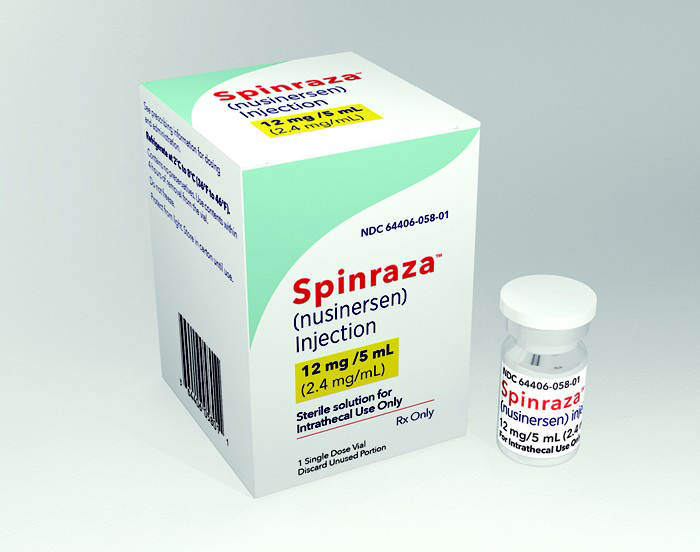Higher Doses of Spinraza To Be Tested in New Phase 2/3 Trial

A new global Phase 2/3 clinical trial will test whether higher doses of Spinraza (nusinersen) provide greater efficacy to spinal muscular atrophy (SMA) patients of all ages.
Biogen aims to include 125 participants with infantile- or later-onset SMA in the DEVOTE study (NCT04089566), to be conducted at 50 sites around the world. The trial is scheduled to start by February and end by December 2022.
Besides efficacy, DEVOTE will also evaluate safety, tolerability, and Spinraza’s pharmacokinetics — its absorption, distribution, metabolism, and excretion — in plasma and in the cerebrospinal fluid (the liquid surrounding the brain and spinal cord). As currently indicated, the medication will be given via intrathecal administration (spinal canal).
The study will be divided into three stages, two of which (A and C) will be open-label — no control group — while the second part (B) will be double-blind and randomized with a control (placebo) group.
In part A, six patients ages 2–15 with later-onset SMA (symptoms after 180 days of age, most likely to have types 2 or 3) will receive a 28 mg loading dose on days 1, 15, and 29, followed by similar maintenance doses four and eight months later.
In part B, 66 patients with infantile-onset (most likely type 1) or 35 with later-onset SMA ages 2–10 will be treated with a 50 mg loading dose 15 days apart, followed by maintenance doses of 28 mg after four and eight months. This will be compared to the approved 12 mg dose in four loading doses and maintenance doses every four months. Alternate sham (placebo) procedures will be used at certain dosing timepoints.
In part C, adults on Spinraza over at least one year prior to the study will receive a single 50 mg dose four months after their most recent treatment, followed by 28 mg maintenance doses four and eight months later. This group will help assess how to transition patients already on Spinraza to higher doses, according to the company. Patients older than 18 years in part C must be ambulatory.
At the end of the study, participants may have the option to enrol in a long-term, open label extension study and continue to receive Spinraza.
Patients who are currently participating in Spinraza trials are not eligible to participate. However, it DEVOTE’s outcomes are favourable, they may, in the future, have the option to receive a higher therapeutic Spinraza dose, said Nancy Mitchell-Sweeney, Clinical Study Leadership, Global Clinical Operations at Biogen, in a Biogen and CureSMA webinar.
For more information on eligibility, trial design, and planned outcome measures, go here.
People with SMA have a faulty SMN1 gene, which greatly limits the amount of SMN, a key protein in specialized cells called motor neurons. The SMN2 gene is an alternative source of SMN, but it normally generates a shorter and unstable version. Spinraza contains an antisense oligonucleotide that works by boosting the ability of this gene to produce normal, full-length protein.
“Antisense oligonucleotides directly intervene at the origin of disease, providing a transformative therapeutic option,” Alfred Sandrock Jr., MD, PhD, Biogen’s executive vice president and chief medical officer, said in a press release.
Over 8,400 people of all ages have already been treated with Spinraza in more than 40 countries, Biogen noted.
“Spinraza has fundamentally changed the natural history of SMA,” Sandrock said. “Spinraza’s highly targeted approach and well-characterized safety profile allows us to continue exploring ways to potentially address the remaining medical needs in the SMA community.”
In a further update to Spinraza’s clinical program, safety and efficacy results in patients with later-onset SMA were to be presented at the 13th European Paediatric Neurology Society (EPNS) Congress, running through Sept. 21 in Athens.
New results from SHINE (NCT02594124), a Phase 3 extension study for patients who took part in prior Spinraza studies, found that children with later-onset SMA experienced improvements or stabilization of their motor function up to nearly six years, as assessed with one or more measures — the Hammersmith Functional Motor Scale-Expanded, the Upper Limb Module, and the Six-Minute Walk Test of exercise capacity.
These results are in contrast to the expected decline seen in the natural history of SMA and add to data from the Phase 1/2 CS2 study (NCT01703988) and the open label-extension CS12 showing three years of motor benefits with Spinraza.
SHINE is following 24 patients who were ages 2–15 at treatment start. Ten have type 2 and 14 type 3 SMA. As of the last study visit, they were ages 7–21.
No participants discontinued treatment due to adverse events, and no new safety concerns were identified during the nearly six-year follow-up period.
“These findings are important in understanding the need for long-term treatment in individuals with SMA,” said Basil Darras, MD, the study’s lead author and director of the Neuromuscular Center and Spinal Muscular Atrophy Program at Boston Children’s Hospital.
Darras, who is also a professor of neurology at Harvard Medical School, further said that the results “reinforce the long-term safety and durability of Spinraza to improve or stabilize motor function in individuals with later-onset SMA.”







